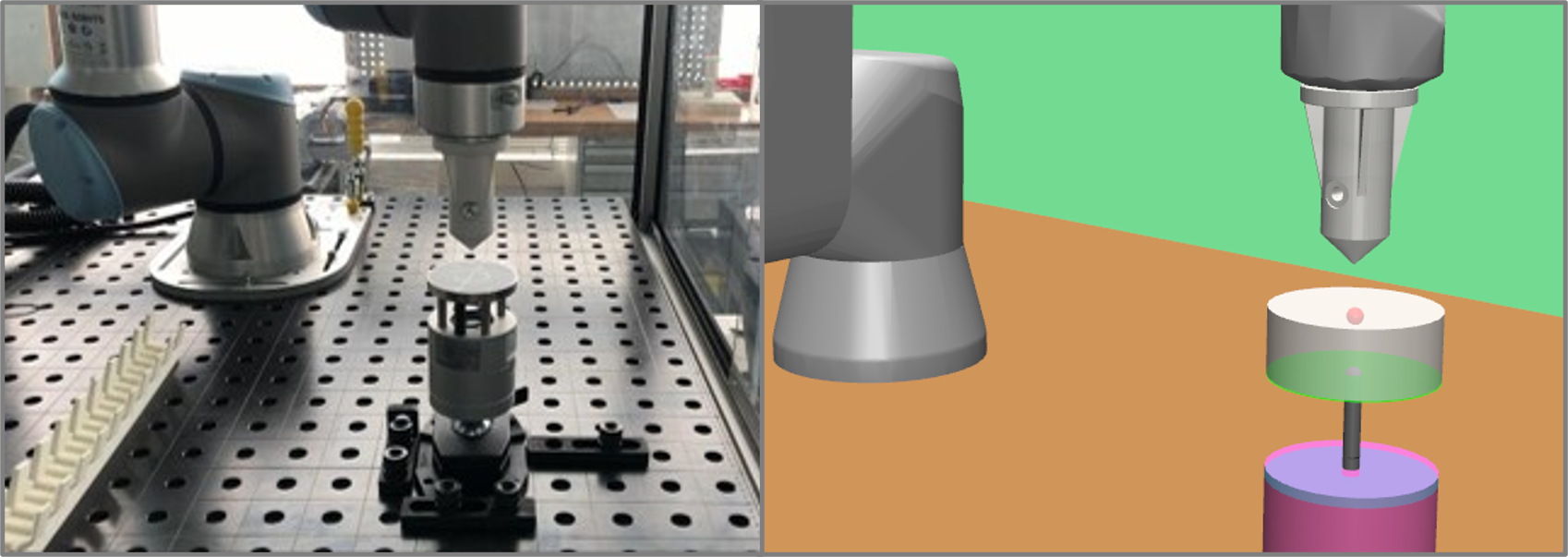APT - Artificial Physics Teacher
Initial situation
Physics simulations are increasingly being used to program or train robots in a safe, digital environment for production processes. In order for the robot to successfully learn the processes, the training data generated in the simulation must be able to represent the real process. Otherwise, there will be deviations in the transfer from simulation to reality (Sim2Real Gap), causing the robot to fail during execution in reality. In order to improve the quality of the simulatively generated data, the physical parameters of the simulation can be optimized, which is currently a complex, time-consuming and manual process.
Solution idea
Neural networks are very well suited to modeling even complex relationships, including the influence of physical parameters on data quality. By comparing data from real, robot-based processes, neural networks can be trained using supervised learning to determine the appropriate physics parameters for the simulation of production processes. The neural networks can then approximate suitable physics simulation parameters depending on the process, which optimizes the simulation and significantly improves data quality.

Benefit
Until now, the optimization of the parameters for the physics simulation has been purely manual, requires extensive expert knowledge and is extremely time-consuming. By training neural networks to select the optimal physics parameters, the data quality is significantly increased and the manual effort is minimized. In particular, this reduces the deviation between simulation and reality (Sim2Real gap). Robots trained in the simulation are subsequently enabled to perform the learned production processes better in reality. Qualitative simulation results can also flow directly into the development and design of new components.
Implementation of the AI application
To train the neural networks, representative training data is first generated both from physical experiments on the real robot and from the physics simulation. For the simulation experiments, the parameters to be considered are varied accordingly in order to record their influence on the simulation result. In the next step, the real and simulated data are compared with each other and fed into the training process. The neural networks are then trained to determine the most suitable simulation parameters based on the determined deviation of the data.
